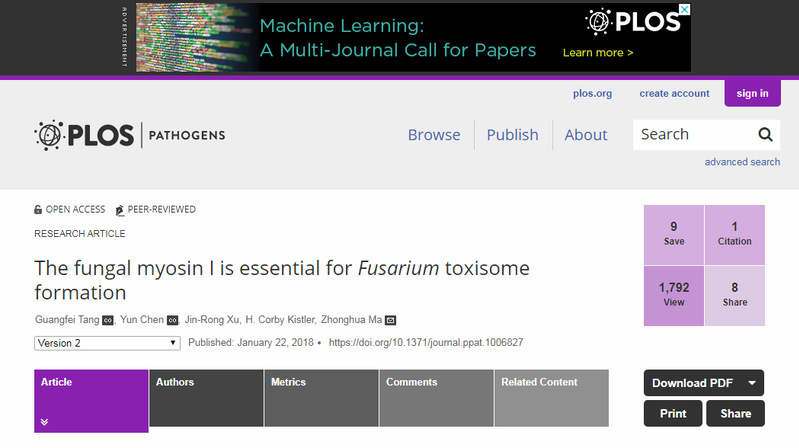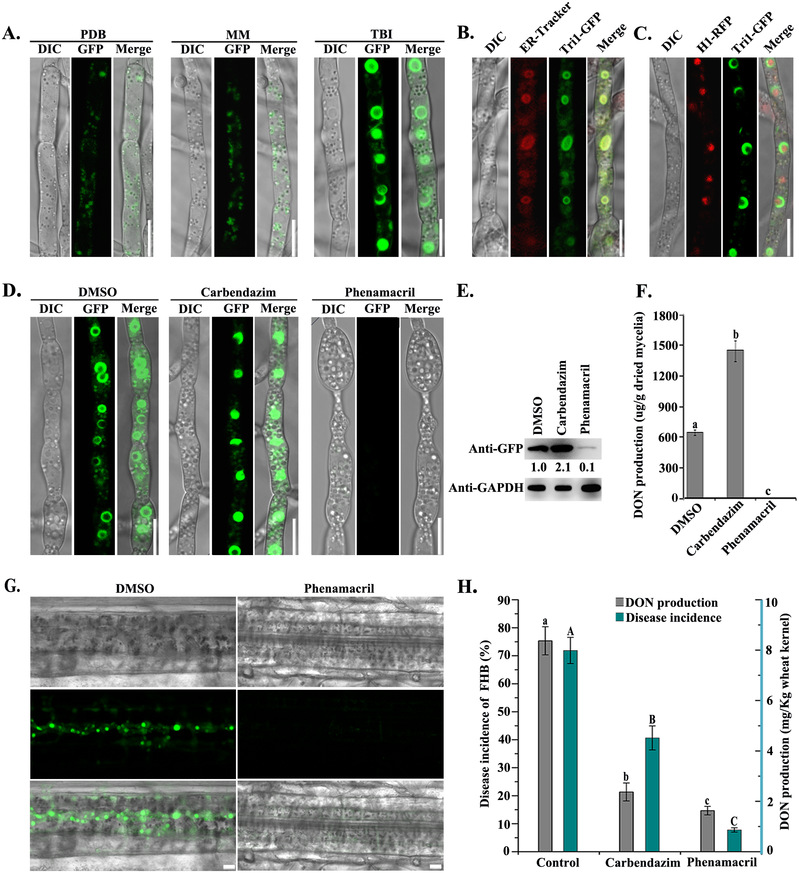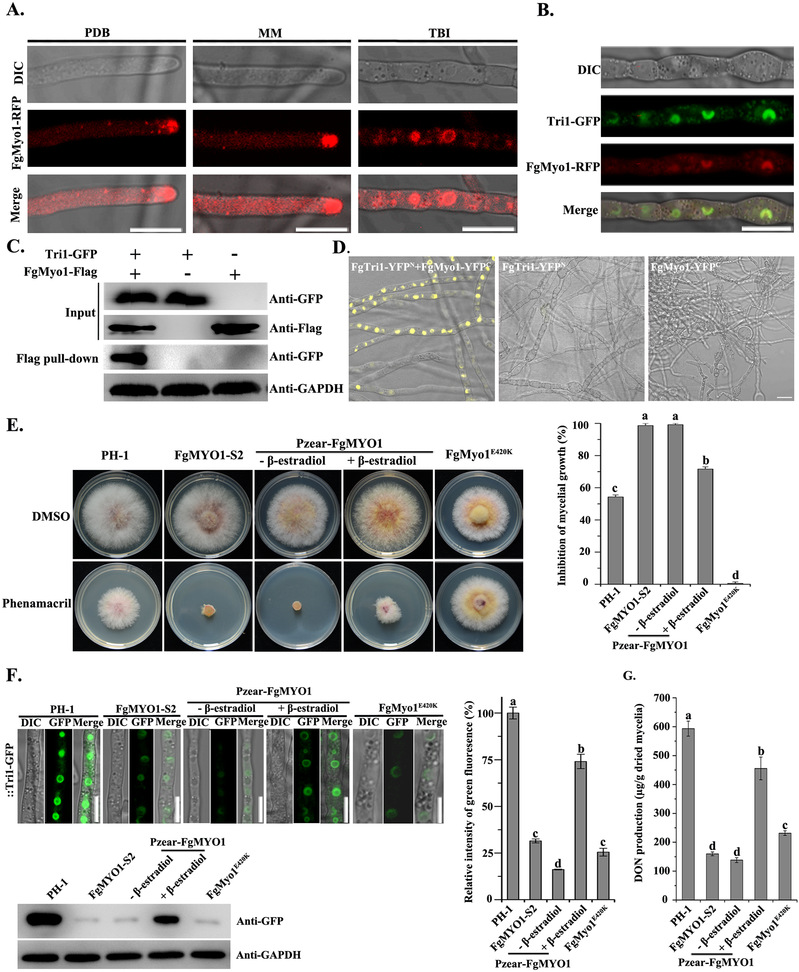RESEARCH
Current location:homepage RESEARCH PUBLICATIONS
PLOS PATHOGENS: The fungal myosin I is essential for Fusarium toxisome formation
DATE:2018-07-15
Abstract
Myosin-I molecular motors are proposed to function as linkers between membranes and the actin cytoskeleton in several cellular processes, but their role in the biosynthesis of fungal secondary metabolites remain elusive. Here, we found that the myosin I of Fusarium graminearum (FgMyo1), the causal agent of Fusarium head blight, plays critical roles in mycotoxin biosynthesis. Inhibition of myosin I by the small molecule phenamacril leads to marked reduction in deoxynivalenol (DON) biosynthesis. FgMyo1 also governs translation of the DON biosynthetic enzyme Tri1 by interacting with the ribosome-associated protein FgAsc1. Disruption of the ATPase activity of FgMyo1 either by the mutation E420K, down-regulation of FgMyo1 expression or deletion of FgAsc1 results in reduced Tri1 translation. The DON biosynthetic enzymes Tri1 and Tri4 are mainly localized to subcellular structures known as toxisomes in response to mycotoxin induction and the FgMyo1-interacting protein, actin, participates in toxisome formation. The actin polymerization disruptor latrunculin A inhibits toxisome assembly. Consistent with this observation, deletion of the actin-associated proteins FgPrk1 and FgEnd3 also results in reduced toxisome formation. Unexpectedly, the FgMyo1-actin cytoskeleton is not involved in biosynthesis of another secondary metabolite tested. Taken together, this study uncovers a novel function of myosin I in regulating mycotoxin biosynthesis in filamentous fungi.



